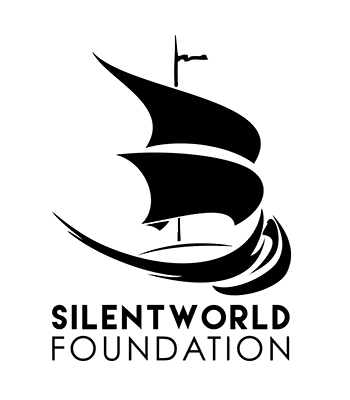RUSHIN': THE DUNBAR & ROYAL CHARTER
Bookends to the Australian Gold Rush Story
In light of 2018 commemorations of The Dunbar’s loss, Silentworld Foundation has teamed up with Bournemouth University, UK and the Australian National Maritime Museum in a collaborative project that takes in a broader view of that period through the lens of two shipwrecks.
The Australian Gold Rush of the 1850s was arguably one of the greatest economic and social events in Australia’s colonial history. The ‘Rush’ caused a huge influx of people to visit or migrate permanently to the Australian colonies.
Emigrants brought an influx of new political ideas to the young colonies leading to events that would ultimately shape the nation, such as the cessation of convict transportation to the eastern colonies in 1853.
The artefact collections relating to the shipwrecks of The Dunbar and Royal Charter are ‘bookends’ to this economic and social event: The Dunbar carried people and cargo outbound to the diggings, whilst Royal Charter represents the return voyage to Great Britain.
The loss of both vessels had a massive impact on their respective communities, both at the time of wrecking and in subsequent years.
Cover image: Painting by Keith Shone ‘The Wreck of the Royal Charter’, The Moelfre Partnership
THE DUNBAR
Tonnage: 1321 (registered)
Rig: Ship
Length: 201’9” (61.5m)
Beam: 35’ (10.66m)
Depth: 22’7” (6.9m)
Construction: oak, teak, reinforced with iron knees, iron breast- and stern-hooks, and iron riders; copper-sheathed and fastened
On 31 May 1857, The Dunbar departed Plymouth, England and arrived off the coast of Sydney, NSW on the evening of the 20th August, 81 days later. The day had been stormy and that evening a gale rose with squalls that obscured the loom of Macquarie Light, located on the sea cliffs a 2.4 kilometres south of the entrance to Port Jackson. Shortly before midnight, Captain Green calculated the ship was six miles (9.7 kilometres) north-east of the entrance to Sydney Harbour, and ordered a blue light burnt in an attempt to summon a pilot. He then ordered the vessel to approach the Heads, keeping Macquarie Light on the port bow.
Shortly afterwards, the Second Mate on the forepeak cried out ‘Breakers ahead!’ and Macquarie Light loomed above the ship. Green, confused by rain squalls and currents, ordered the ship to starboard, which catastrophically drove The Dunbar into 60m high sea cliffs.
Every passenger – man, woman and child – and all but one of the ship’s crew died in the wild seas that crashed over the wrecked vessel and into the cliffs.
ROYAL CHARTER
Tonnage: 2719-ton
Length: 236’ (72m)
Beam: 39’ (12m)
Depth (of hold): 23’ (7.0m)
Propulsion: single direct-acting steam trunk engine of 200 nominal horse power, single iron propeller
In October 1859, the clipper was returning to Liverpool, UK from Melbourne, Australia with approximately 320 passengers on board, a crew of 112 and a handful of LASNC employees, when it encountered a Force 10 storm (now known as the Royal Charter Storm) off Anglesey, Wales. During the night of 25-26 October 1859, the wind changed direction and increased to a Force 12 hurricane. The storm’s high winds and seas drove Royal Charter toward the coast of Anglesey.
Captain Taylor anchored the vessel offshore, reduced its top-hamper by cutting down the masts, and attempted to ride out the storm using the engine. Despite these efforts, all anchor cables parted and Royal Charter was driven ashore at Porth Alerth, where it quickly broke up. A crewman managed to swim ashore, which enabled the subsequent rescue of 21 male passengers and 18 male crew members. Unfortunately, most of the passengers and crew, totalling over 450 people, were drowned.
Royal Charter carried a large quantity of gold (at least £322,000) in its strong room as official cargo, along with gold dust, nuggets and Sydney Mint sovereigns carried by miners returning from ‘the diggings’. The presence of such wealth resulted in speculation and accusations of theft in subsequent years, which have continued to the present day.
SO, WHAT WILL THIS PROJECT DO?
The two wreck sites and their associated relic collections have the potential to significantly contribute to ongoing research into ‘The Archaeology of Coming to Australia’. Between 1788 and 1900 there were four main ways that Europeans immigrated to Australia: a convict (1788-1868); a government migrant (1822-1845); a gold miner (1851- 1860) or a bounty immigrant (1860-1899). Arguably the Australian Gold Rushes had the most dramatic and long-lasting impact of all four of these immigration phases.
The project, through the case study of The Dunbar and Royal Charter, will set out to conduct the first most comprehensive study of Australian Gold Rush shipwrecks, their material culture and impact by locating and assessing the extensive material culture collections relating to the two vessels held in both public and private hands in Australia and the UK. An additional outcome of this research is that it will provide evocative and interesting material for a physical and/or virtual exhibition exploring this important story that spans half way around the globe.
On a more technical note, the vessels are very good examples of significant vessel design and construction – one is a Blackwall Frigate and the other an auxiliary steam clipper. These two vessel types revolutionised passenger travel in the mid-19th century and allowed people, goods, services, news, technologies and ideas to flow back and forth between the Australian colonies and Europe at a rapid pace. Comparative analysis of each vessel’s structural remnants could reveal new insights about how the design, construction and outfitting of ships participating in the Australian Gold Rushes evolved.



